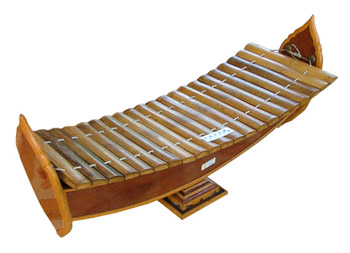The Vietnamese Nation has its own unique, diversified art. The XVIIth century, together with the “Viet” immigrations to the south, in the historical condition of a new land and especially the accuturation between the ethnic people as well as the western culture. It sped up the development and formed special characteristics in the form of social entertainment provided by amateur musicians (called Don ca Tai tu), “Hat Boi” and “Cai luong” theatre arts. On the other hand, various types of Khmer art were performed as “Robam” and “Du Ke” or “hat kich”, “nhac kich” of the Hoa people with the unique musical instruments. This creates for music a specific and typical feature of the South.

Sai Gon-Gia Dinh was open to new cultural value, not only for its excellent mark of the art, but also a cultural and educational centre of the South with a traditional fondness for learning, venerating the teacher as well. Many notables emerged from this land such as Vo Truong Toan and his pupils in the “Gia Dinh Tam Gia” (the three famous scholars): Trinh Hoai Duc, Le Quang Dinh and Ngo Nhon Tinh. It was also the first centre for propagating national language and where newspapers were first published in Vietnam.
* “Hat Boi” Theatre art
The cradle of “Hat Boi” was from the stage of “Hat Tuong” has to be 700 years ago in Vietnam. But “Tuong” thrived best in the middle of Vietnam during the Nguyen dynasty.
Development in the South, “Tuong” converted into “Hat Boi”, they are different from the names, but the art is still basiscally the same. About the same, singing male, singing guest… about orchestras are: percussion (the drum), the steam (other brass), ect..
The first plays such as San Hau, Kim Thach Ky Duyen were popular in the Gia Dinh stage in the mid-19 century or in Bac Lieu as theatre company of Bau An (Mr. An showman).
There were many eminent orchestras and artists such as “Bau Bon”, “Bau Thang”, “Ba Do”, “Nam Ut”, ect.
In recent years, implementation of the policy encouraging the culture of Vietnam has strongly advanced national identity. “Hat Boi” is cared and promoted more to commensurate with the stature of the traditional stage of the South.
* “Cai luong” Theatre art
“Cai luong” Theatre art was the combination of “Don ca Tai tu” (a social entertaiment provided by amateur musicians) and southern folk-song. It developed rapidly in late 19th century in the South. In 1917, the first play Luc Van Tien of author Truong Duy Toan was performed at Nam Tu theatre in My Tho
Specific characteristics of “Cai luong” theatre art were the narrative genre in first person and lyric. The two factors singing and speaking are the close combination in a Cai luong Theatre play.
Cai luong stage also diverse in subject and style show. Two types of common theme of “Cai luong” play revolve around the historical and social contents while the thoughts expressed patriotism and rich gratitude of the Vietnamese.
So far, through nearly a century of development, “Cai luong” has gained brilliant achievements and increasingly asserted its role in the traditional stage of Vietnam.
* Objects:
– Membranophone, aerophone, cordophone
– Famous “Cai luong” scenarios in the XXth century
– Disks: The famous “Cai luong” plays in the South, XXth century
– Record-player in the XXth century
– Altar worshipping the creator of modern theatre…

* Khmer folk-music instruments
The treasure of Khmer folk-music instruments is extremely rich and diversified which reflects the specific identity of Khmer’s people and contributes to enrich traditional culture of Viet Nam in general and treasure of folk-music instruments in particular.
These musical instruments were made by manual methods and made of natural materials such as wood, bamboo, small bamboo… and their composition have officially arranged in folk and pentatomic orchestras. The term “pentatomic” here refers to five different materials: copper, iron, wood, leather and air.
According to customs, “pentatomic orchestra” only allowed in the pagoda on the occasion of greate ceremonies; and in the ceremonies of funeral, flowers offering, monk robes offering and Ook Om Boc. The vast majority of the pentatomic orchestra are stored in the pagodas. Today, for reason of society development requirements, the pentatomic orchestra ought also to expand its activities.
Khmer folk-music instruments became valuable assets, contributing to enrich the cultural identity of Vietnam. That cultural values should be to maintain, preserve and promote.
* Objects:
– The musical instruments in the Khmer pentatomic orchestra: Roneat ex, roneat thung, roneat dex, sko thums, chhung, sko sampho, srolai pin peat trumpets, koongvong touch, koovong thum.
– Masks of “Ro bam” theatre art of the Khmer ethnic group


